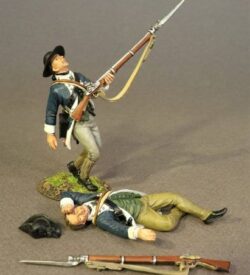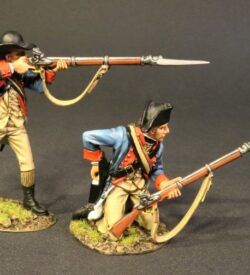SQR-06N Four Light Infantry, Simcoe’s Rangers
$162.00
Description
The Queen’s Rangers came into being when Robert Rogers was authorized to raise a “Corps of Provincials” on August 16th 1776. Recruited originally from Loyalists in New York and Connecticut, its men were farmers and city dwellers with little military experience.
They were a Loyalist military unit and were named for Queen Charlotte, consort of George III. The Queen’s Rangers served as a light corps in the tradition of British Rangers during the war, operating on the flanks and in advance of Crown forces, manning outposts, conducting patrols, and carrying out reconnaissance and raiding operations.
Following an inauspicious start when it was mauled by an American surprise attack at Mamaroneck in October 1776, it participated successfully in various campaigns throughout the Revolution until the surrender at Yorktown. In a period of about a year, the Rangers had three commanding officers following Rogers. Major Christopher French reorganized the corps, during which process many officers and enlisted men were discharged. He was followed by Major James Wemyss in May 1777, under whom the unit increased in size and efficiency, participating in the Brunswick raid of June 1777. In the Battle of Brandywine, the command suffered the loss of one third of its number in killed or wounded, fourteen of twenty one commissioned officers were casualties.
Wemyss was wounded at the battle of Germantown. Major John Graves Simcoe succeeded him as commanding officer on October 15th, 1777.
It was under Simcoe that the Rangers reached the height of its efficiency. Starting as an infantry command, it gradually expanded and before its surrender at Yorktown consisted of eleven companies of foot, including riflemen, light infantry, grenadiers and a highland company, as well as dragoons, Hussars and some light guns.





